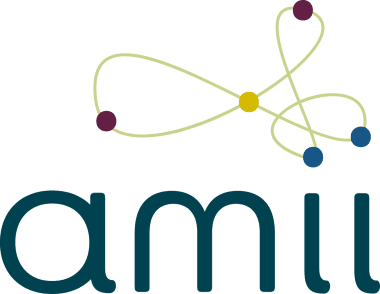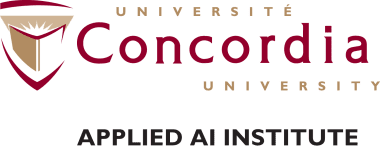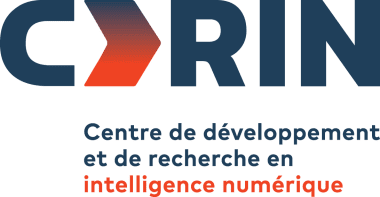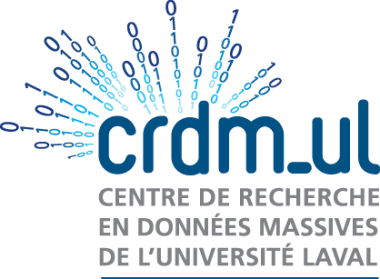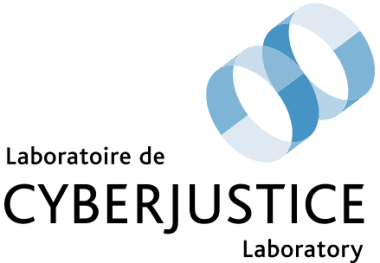Thème 1 – Apprentissage automatique et optimisation intégrés pour la prise de décision en incertitude : Vers des chaînes d’approvisionnement robustes et durables
Chercheur.euse.s principaux.ales : Erick Delage (HEC Montréal, GERAD), Yossiri Adulyasak (HEC Montréal, GERAD), Emma Frejinger (Université de Montréal, CIRRELT)
Toute décision implique une certaine forme d’incertitude. C’est certainement le cas dans les chaînes d’approvisionnement où la forte variabilité de la demande, des coûts et des déplacements complique considérablement la planification de l’approvisionnement, la production, la distribution et du service. Dans un contexte en constante évolution où la fréquence des données est élevée, les paradigmes classiques s’appuyant sur l’entraînement de modèles, leur validation, suivi par l’optimisation des décisions ne suffisent plus. Ce programme développe de nouvelles méthodes pour exploiter de manière plus efficace et adaptative les données dans la prise de décision. Il est fondé sur des perspectives modernes en optimisation et en apprentissage automatique, incluant l’apprentissage profond par renforcement/de bout-en-bout, les mesures de risque et l’optimisation contextuelle/robuste aux distributions. Sa mission est triple : (i) développer la prochaine génération de méthodes pour gérer l’incertitude dans les modèles d’optimisation axés sur les données en intégrant l’apprentissage automatique; (ii) identifier des opportunités scientifiques pour améliorer la robustesse des chaînes d’approvisionnement ; et (iii) stimuler l’intégration de modèles d’optimisation stochastique chez nos partenaires tout en définissant des cas d’application qui guideront les futures avancées méthodologiques. En somme, ce programme vise un cercle vertueux de découvertes qui sont à la fois alimentées et transformatrices pour un secteur important de l’économie canadienne.
Thème 2 – IA, Biodiversité et changements climatiques
Chercheur.euse.s principaux.ales : Etienne Laliberté (Université de Montréal, IRBV), Christopher Pal (Polytechnique Montréal, Mila), David Rolnick (Université McGill, Mila), Oliver Sonnentag (Université de Montréal), Anne Bruneau (Université de Montréal, IRBV)
Les changements climatiques modifient la biodiversité végétale, ce qui pourrait entraîner des conséquences potentiellement catastrophiques sur la résilience et le fonctionnement des écosystèmes terrestres. Une source majeure d’incertitude dans le bilan de carbone terrestre mondial, et donc pour les projections climatiques futures, est la façon dont les espèces végétales diffèrent dans leurs réponses phénologiques aux fluctuations climatiques saisonnières. Les changements climatiques modifient aussi la répartition des espèces végétales dans des paysages entiers, mais nous ne sommes pas en mesure de suivre ces changements de biodiversité à l’aide d’un échantillonnage classique sur le terrain. Les technologies de télédétection, telles que les phénocams ou les drones, offrent la possibilité d’étudier la phénologie et la biodiversité des plantes de manière très détaillée à diverses échelles spatiales. Ces nouvelles approches pourraient révolutionner la science et la conservation de la biodiversité et contribuer à orienter la conception de solutions fondées sur la nature et essentielles pour atténuer les effets des changements climatiques. De nouveaux algorithmes d’IA sont nécessaires pour exploiter tout le potentiel de ces technologies transformatrices et ses liens avec des flux de données et des produits plus courants. Ce programme permettra de concevoir ces nouveaux algorithmes en nous appuyant sur les plus récents développements en matière de vision par ordinateur et de méta-apprentissage pour cartographier les espèces végétales et leurs signatures phénologiques. Les algorithmes seront mis directement entre les mains d’utilisateurs finaux scientifiques et non scientifiques grâce à la conception d’une plateforme d’apprentissage actif. Cette recherche en IA permettra aux chercheurs et aux professionnels en exercice de transformer les images en données exploitables sur la biodiversité et la phénologie des plantes, ce qui leur fournira des outils pour contribuer à la lutte contre la perte de biodiversité et les effets des changements climatiques.
Thème 3 – Santé humaine et utilisation secondaire des données
Chercheur.euse.s principaux.ales : Michaël Chassé (Université de Montréal, CRCHUM), Nadia Lahrichi (Polytechnique Montréal, CIRRELT), An Tang (Université de Montréal, CRCHUM)
L’intelligence artificielle a le potentiel de transformer les soins de santé. En logistique ou en imagerie, ces technologies font leur entrée et des centaines d’algorithmes sont en cours de développement pour offrir du support aux soins des patient.e.s. Cependant, plusieurs défis demeurent quant à leur utilisation à grande échelle, sur le terrain. Parmi eux, la capacité de ces algorithmes à être généralisables. Comment garantir la performance d’un modèle sur des données lorsque leurs caractéristiques sont différentes de celles utilisées lors de l’apprentissage? Par exemple, un algorithme entraîné à partir de données d’une population spécifique pourrait être moins performant s’il est appliqué sur une autre population.
Ce programme vise donc à étudier de nouvelles méthodes pour améliorer cette généralisation, et se décline en quatre objectifs. D’abord, mettre en place un environnement de recherche permettant d’étudier des méthodes susceptibles d’améliorer cette généralisation en contexte réel. Deuxièmement, optimiser les flux de données obtenus en milieu de soins réel pour des fins de recherche algorithmique. Puis, investiguer des problématiques spécifiques liées à la généralisation algorithmique et à l’utilisation secondaire de données médicales. Enfin, créer un ensemble de données en accès libre qui pourra être utilisé pour améliorer les découvertes du programme.
Thème 4 – L’IA pour la découverte de matériaux et molécules
Chercheur.euse.s principaux.ales : Yoshua Bengio (Université de Montréal, Mila), Michael Tyers (Université de Montréal, IRIC), Mickaël Dollé (Université de Montréal), Lena Simine (Université McGill)
Concevoir des molécules ayant les propriétés souhaitées est un problème fondamental dans la découverte de médicaments, de vaccins et de matériaux. Les approches courantes pour concevoir un nouveau médicament peuvent prendre plus de 10 ans et nécessiter un milliard de dollars américains. Des matériaux ont été conçus uniquement en tenant compte de leurs caractéristiques de performance, ce qui a conduit à des matériaux composés d’éléments rares, souvent toxiques, qui peuvent causer des dommages importants à l’environnement. L’intelligence artificielle (IA) a le potentiel de révolutionner la découverte de médicaments et de matériaux en analysant des éléments probants dans de grandes quantités de données accumulées et en apprenant comment chercher dans l’espace des molécules et, par conséquent, d’accélérer et d’améliorer considérablement le processus.
Ce programme vise à construire un cadre d’apprentissage automatique efficace et efficient pour la recherche de molécules ayant des propriétés désirées. Il sera essentiel de nous appuyer sur les collaborations en cours (i) entre Mila et l’IRIC visant à optimiser les algorithmes pour découvrir de nouveaux antibiotiques et (ii) entre Mila et les experts des matériaux de McGill et de l’Université de Montréal visant à concevoir des matériaux ayant des applications environnementales, notamment pour lutter contre les changements climatiques, et de les élargir. Ce projet multidisciplinaire soulève également des défis fondamentaux passionnants en matière d’IA pour ce qui est de l’apprentissage de la recherche et de la modélisation et de l’échantillonnage de structures de données complexes comme les graphiques et pourrait avoir des applications pour les découvertes scientifiques de manière plus générale.
Thème 5 – L’IA centrée sur l’humain : du développement des algorithmes responsables à l’adoption de l’IA
Chercheurs principaux : Pierre-Majorique Léger (HEC Montréal, Tech3lab), Sylvain Sénécal (HEC Montréal, Tech3lab)
Les interactions entre les humains et les technologies d’intelligence artificielle (IA) sont aujourd’hui courantes. Nous interagissons quotidiennement avec l’IA, que ce soit pour accomplir des tâches professionnelles ou personnelles. Cependant, l’adoption humaine de l’IA n’est pas toujours un succès et est loin d’être automatique et adéquate. Qu’il s’agisse de citoyen.ne.s, d’employé.e.s ou de consommateur.trice.s, des enjeux tels que la présence de biais, le manque de confiance et même la faible satisfaction de l’utilisateur.trice affectent l’adoption de l’IA dans divers contextes. Une approche holistique de l’IA est donc nécessaire pour favoriser son adoption. Ce programme de recherche multidisciplinaire étudie le cycle complet de développement responsable de l’IA, de sa création à son adoption par les utilisateur.trice.s, en mettant l’humain au cœur du processus. L’objectif est de développer des lignes directrices en matière de conception de l’IA centrée sur l’humain, grâce à une approche méthodologique et multiméthode itérative, menée par une équipe de chercheur.euse.s multidisciplinaire.


